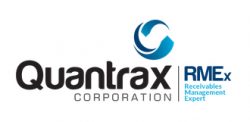
Here are excerpts from that interview.
EDITOR – In a period where we have seen the number of vendors shrink compared to 10 years ago, you have survived for about 15 years as a collection software company. How do you summarize your company and the state of collection software?
R.D. – It has not been easy. Owners and decision-makers in this industry seem to like the status quo. Most companies have not understood that software does not age very well. When industries evolve, major revisions are often required. Many software companies are growing their maintenance revenues, without investing in their next product. This could have very serious consequences a few years down the road.
EDITOR – You claim to be a major player in the collection software space, but many are not aware of your presence. Is this an accident or something you wanted? Why do you think you should be taken seriously in this space?
R.D. – Most of it is by design! We can not sell radically different technology (our product can actually replace a collection expert when it comes to decision–making) without first educating the industry. We can not compete with the deep pockets and advertising budgets of larger companies and industry publications and collection conferences have refused to share our story. We had no alternative but to focus on developing this technology and finding people who quickly see its potential. As for why we should be taken seriously? We (surprisingly) have a 15-year lead on “thinking software”. We have a stable and happy client base, we have great security and have scaled to over 500 agents.
EDITOR – How is your software so different from the other systems?
R.D. – All our competitors have conventional “data-based” systems. In collections you have account, client and agent data, and we write programs that allow users to change that data and produce different reports and update different types of information. That is the data-based approach. Our system was built ground up to be “intelligent”. We allow our users to program their system (with no programming knowledge) to think and make decisions like a collection expert. Because this happens at every point in the collection cycle, it is different from data-based systems that other vendors have enhanced to make some decisions, based on specific business rules. These traditional systems look at a few parameters and consider only a limited number of variables selected by a programmer. With intelligent software we are looking at hundreds, sometime thousands of rules and conditions that enable the system to think and make decisions. The technology is unique and its architecture is radically different from traditional software.
EDITOR – Is there any shocking prediction you would like to make?
R.D. – Let me think about that one. I think the high-end collection products will get more and more powerful. With core products that have been around for about 15 years, those systems will get harder (some day even impossible) to maintain, and will become weaker and more fragmented. The Ontario System’s and Columbia Ultimate’s will have to bolt on lots of new changes, or start to build a new product. For them, that is the only way to address mistakes in the original design (quite normal in the software industry), take advantage of modern hardware and software and plan for the predictable future (compliance, analytics, security and mobile technology). These areas are likely to force vendors to make major architecture changes, and redesigning an aging collection software product can be as difficult and expensive as renovating a house (It is usually easier, cheaper and faster to build a new product). It is possible that some large companies will find it too expensive to change and deploy new products. Surprisingly, they could run out of new clients and struggle to hold on to their existing clients. Aren’t we shocked to see how one of the world’s most valuable tech companies, Research In Motion, who owns Blackberry, is struggling because it did not innovate? My “shocking” prediction would be that some of the industry’s largest companies could start to lose their momentum and position in the next 5 years – Some may even disappear!
EDITOR – Wait! You have been around for about 15 years, which may be a little less than some of your larger competitors. Why hasn’t your software aged in the same way?
R.D. – It has! But increasing our sales and maintenance revenues was not our priority. We have not had a salesperson even though we are in about 35 states and in Canada. We have strategically focused on creating and maintaining the best collection technology. That requires major redesign of the platform every 4 – 5 years. It’s a lot of work, and it is expensive (programming is easy, redesign is not). Doing major work every 5 years is a lot easier than trying to do it after 15 years. That is the problem our competitors will face. When they decide to create a new platform (because it is too difficult to enhance what they have), their products many be close to 20 years old. How long will it take them to build a new product? Today, a lot more than 5 years, which is why we think that it will be very difficult for new products to be built and to be successful after 2000.
Interestingly, those predictions were made around 2006. What has happened since that time?
The three major vendors (Ontario Systems, Columbia Ultimate and CR Software) did introduce new platforms in the last 7 years but failed to replace their older installed products. As could have been expected, they have struggled to maintain multiple versions of their products. Columbia and CR Software were sold to larger companies, and those products are unlikely to be enhanced or developed in the future.
For a while, Latitude challenged the major vendors. They secured wins against older systems because they were perceived as “modern” and handled some of the newer requirements in a better way than the older platforms. Latitude was sold to Interactive Intelligence in 2010. Interactive Intelligence was acquired by Genesys in 2016. Sadly, the Latitude product does not seem to have the investment or momentum that brought it success many years ago.
Many users who have made decisions to switch software platforms have done so because they have been unhappy with their vendor and not because a new system would do more for them. Most have had long and difficult “conversions” for some of the reasons we predicted – With its automation and compliance requirements, this industry is more challenging than it has ever been!
To handle complexity, fragmentation, the lack of support by vendors and the need for new code to manage compliance and security, IT departments in collection companies have grown exponentially.
The last 5 years have tested our industry’s ability to quickly adjust and deliver innovative technical solutions. It can be reasonably argued that we have not passed many of our tests. Managing cell phones, express consent, predictive dialing, call frequency rules, compliance down to the city level, compliant text messaging – These require complex technical solutions. How difficult is the problem and how skilled are we, if we have to talk about it for 5 years? Unfortunately, there has been too much talk, and few working solutions. Why? Older products simply can not handle the new data and and design requirements for today’s collection industry. It’s too difficult and expensive to create a new product, so the logical option is to do nothing!
We actually mentioned mobile technology 10 years ago. Today we hide behind the fear of potential lawsuits and have not incorporated this valuable technology into our operations. This is not an advertisement for Quantrax, but with our software, your agents can be working an account, set up a payment arrangement (with a check or credit card) and ask the consumer for permission to notify them of their upcoming payments and updates to their balances, via text message. Assuming the consumer says yes (and who will not?) the agent clicks an option and the consumer immediately receives a text message! The consumer responds with a code and the agent sees the response which is also notated on the account. Your post-dated check and credit card payment reminders can now go out via text message only. If you send out 20,000 letters, that is $10,000 in savings per month! And it is superior customer service. Why doesn’t everyone do this today? Is it because we are afraid of lawsuits? Why would we be concerned, when everyone does it – your bank, the airlines and travel booking sites! No, we do not do it because we can not do it. And that is because your software can not do what we just described.
On a positive note, we are definitely seeing a major shift in thinking. Perhaps it is the new administration’s promise of actions to remove some of the crippling regulations we work with. Companies are actually looking at their technology and realizing that it is the center and core of their operation. Modern technology is changing the world and how we live and work – Just look at what Uber did to the taxi industry. We believe that new thinking is very good news for the collection industry. Unfortunately, if you are a larger company, you may have to spend some money. Fortunately, one–time technology costs are usually a small percentage of the recurring costs of running a collection operation. As an example, if you have a company with 100 people, you could easily be spending $3.5 million a year on salaries and benefits depending on where you are located. What would new hardware and software cost? If you could increase productivity by 15%, improve customer service and attract better employees, even spending $750,000 on a new solution will pay for itself in a year. You can finally work smarter and as the saying goes, “Laugh all the say to the bank!” You don’t make money, without spending money – There are good times ahead for the collection industry.
Ranjan Dharmaraja
Quantrax Corporation Inc.
Ranjan Dharmaraja is founder and chief technologist at Quantrax Corporation, a company that created an intelligent collection platform over 20 years ago. Self-funded, they have continued to invest in and successfully develop and deploy technology that offers modern solutions to old problems. In no way is this article intended to advertise Quantrax or its products.
